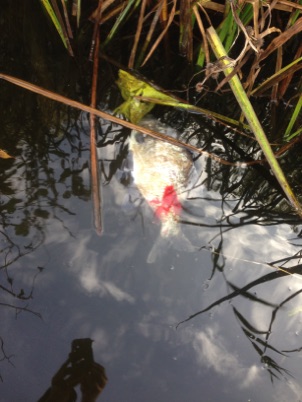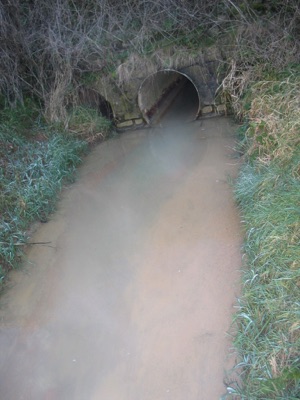





We provide post pollution monitoring to assess the extent and severity of any pollution event and investigate incidents of fish mortality, seeking to provide mitigation solutions. Where an issue is suspected we are able to deploy data loggers (such as turbidity, light temperature etc) to monitor on-going situations. We are also able to provide on-site monitoring of water quality elements to help determine causes of pollution and fish mortality.
We provide solutions to environmental and ecological issues, ensure compliance and protect the environment. We work hard to enable you to meet your legislative responsibilities and when we are involved at project onset can provide advice to reduce risk and prevent pollution events occurring. Post event we work with our clients in order to mitigate and even add value by enhancing the environment within the same project/incident.
Diffuse pollution causes longer term effects, from smothering spawning gravels to increasing turbidity and preventing macrophyte growth. De-oxygenation can also occur during these events. All are harmful to aquatic life and in particular fish. Identifying point sources is an integral component of our work. We undertake water quality monitoring through to pre emptive translocation of fish to fish rescues during or post event.
In confined watercourses or still waters, where pollution has depleted oxygen levels and fish are in distress we are able to deploy aeration, fish removal or translocation should the site require longer term remediation measures
Water quality
We measures and assess water quality parameters - see also using invertebrates as indicators of biological quality (Invertebrate surveys). Part of the suite of water quality parameters are: Temperature, turbidity and dissolved oxygen monitoring:
Temperature monitoring
Using data loggers to monitor water temperatures at a scale from every minute (in cases of discharge effects during events) through to every 6 hours over several years to detect seasonal and temporal changes and how they affect aquatic communities. We deploy temperature data loggers throughout all aquatic ecosystems.
Turbidity
Measures of turbidity (through relative light level) monitoring is frequently carried out via deployment of remote data logger, often from from several months to years. Turbidity is caused by algal population growth, re-suspension of sediments in shallow systems created by fetch, or anthropogenic activities such as dredging. Aquatic activity also causes turbidity such as benthivourous fish feeding. Effects of increased turbidity include reduce light levels and reduce macrophyte growth with numerous knock-on effects.
Dissolved oxygen
Assessment of DO is important where there are suspected pollutants and/or activities that may reduce availability of oxygen. For instance, during weed cutting activities, the resultant biological oxygen demand can cause DO levels to rapidly fall causing distress and potential mortality to fish. We undertake active monitoring of DO levels in all aquatic systems